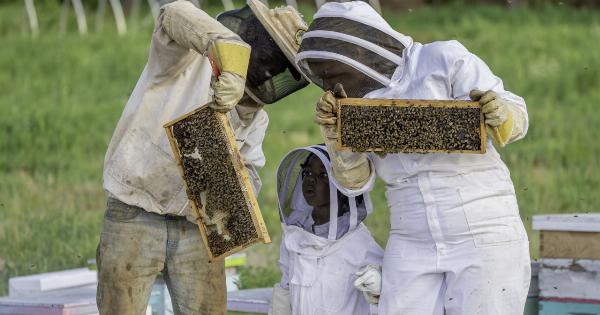Despite common beliefs that younger generations are having less sex, a closer look at recent statistics shows that the opposite is actually true.
A number of studies and surveys conducted in different parts of the world consistently indicate an increase in sexual activity among young people compared to previous decades. In this article, we will explore some of these statistics and what the possible reasons behind this trend could be.
1. The Decline of Sexual Taboos
One factor that could be contributing to the increase in sexual activity among younger generations is the decline of sexual taboos. Historically, many societies have viewed sex as a private matter that should not be discussed openly.
This attitude often led to a lack of sex education, which in turn resulted in young people being misinformed or uninformed about sex. However, in recent years, this attitude has changed, with sex becoming a more open and mainstream topic.
In many parts of the world, there are now comprehensive sex education programs in schools that provide young people with information on safe sex practices, contraception, and consent.
Additionally, the rise of social media has made it easier for young people to access information about sex from a variety of sources, including peers and experts. These changes have helped to break down some of the barriers to discussing sex openly, leading to a better-informed and more sexually active younger generation.
2. The Impact of Technology
The rise of technology could also be contributing to the increase in sexual activity among younger generations. In the past, people had to rely on face-to-face interactions to meet potential sexual partners.
However, the internet and social media have made it easier for young people to connect with others who share similar interests and desires.
Dating apps like Tinder and Bumble have become popular among young people, providing a platform for them to explore and express their sexuality.
The anonymity provided by these apps can also allow people to explore their sexual desires without fear of judgment from others. Additionally, the widespread availability of pornography on the internet has made it easier for young people to access sexual content and learn about different sexual practices.
3. Changing Attitudes towards Sex
Another factor that could be contributing to the increase in sexual activity among younger generations is changing attitudes towards sex. In the past, sex was often seen as a means of procreation or as a duty within a committed marriage.
However, younger generations today often view sex as a fun and pleasurable activity that can be enjoyed outside of marriage.
This shift in attitude towards sex has been influenced by changing social norms and the rise of feminism and LGBTQ+ rights movements.
Young people today are more likely to support equal rights and gender equality, which has led to a more open and accepting attitude towards sex outside of traditional relationships. Additionally, the stigma surrounding sex before marriage or casual sex has decreased among younger generations, making it more acceptable and commonplace.
4. The Role of Stress
Although it may seem counterintuitive, stress could also be contributing to the increase in sexual activity among younger generations.
Today’s young people experience high levels of stress due to factors such as academic pressure, financial uncertainty, and uncertainty about the future. Sex can be a way for young people to relieve stress and unwind after a long day or week.
Additionally, research has shown that sex can have a positive impact on mental health, by reducing stress levels, improving mood, and increasing feelings of intimacy and connection with others.
This means that young people who are experiencing high levels of stress may turn to sex as a way to improve their mental health and well-being.
5. Conclusion
Overall, statistics indicate that younger generations are having more sex than ever before.
While there are a number of factors that could be contributing to this trend, including changing attitudes towards sex, technological advancements, and the decline of sexual taboos, it is clear that sex is becoming more accepted and mainstream among young people. Whether this trend will continue into the future remains to be seen, but for now, it is clear that younger generations are leading the way in sexual liberation and exploration.



























